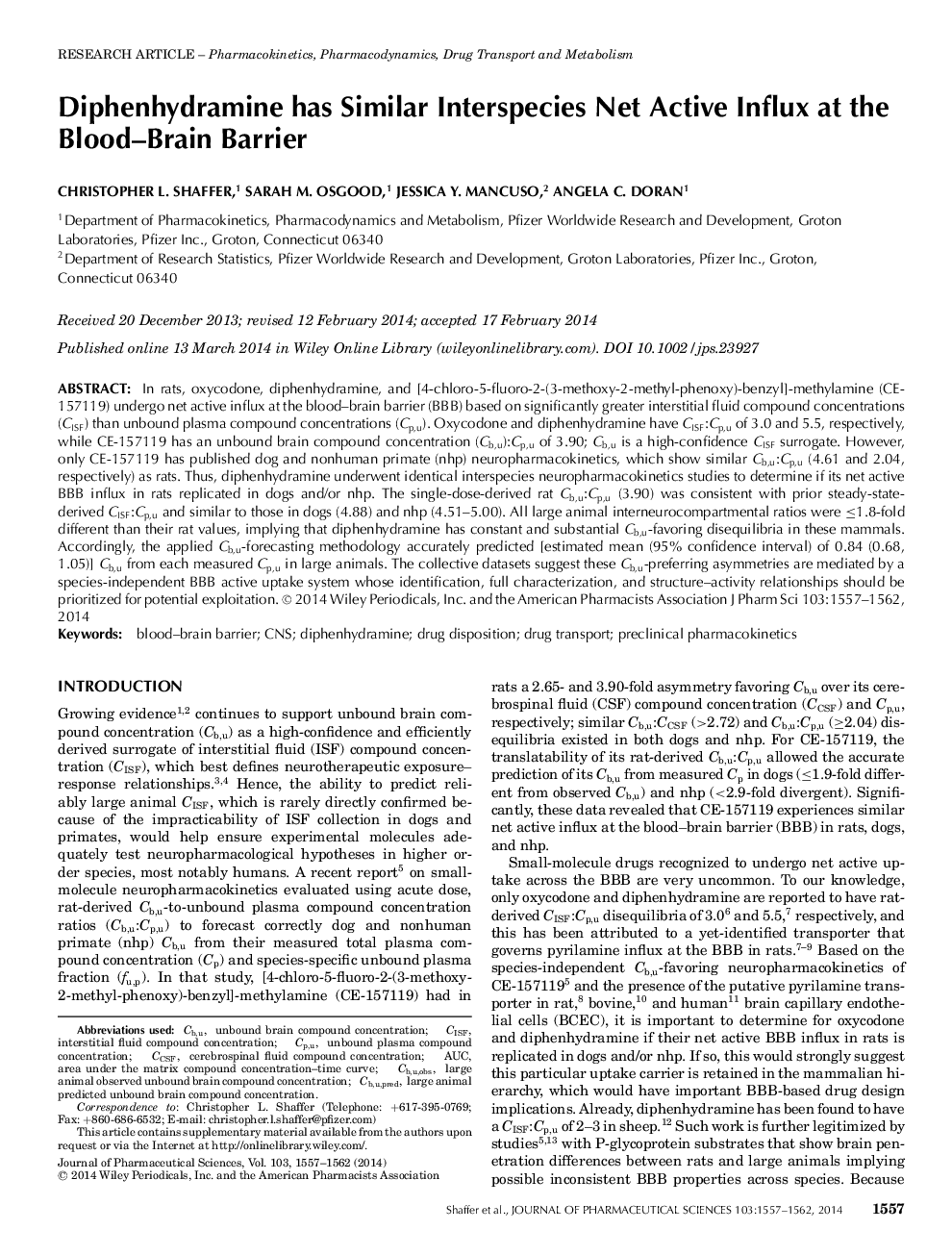| Article ID | Journal | Published Year | Pages | File Type |
|---|---|---|---|---|
| 10162368 | Journal of Pharmaceutical Sciences | 2014 | 6 Pages |
Abstract
In rats, oxycodone, diphenhydramine, and [4-chloro-5-fluoro-2-(3-methoxy-2-methyl-phenoxy)-benzyl]-methylamine (CE-157119) undergo net active influx at the blood-brain barrier (BBB) based on significantly greater interstitial fluid compound concentrations (CISF) than unbound plasma compound concentrations (Cp,u). Oxycodone and diphenhydramine have CISF:Cp,u of 3.0 and 5.5, respectively, while CE-157119 has an unbound brain compound concentration (Cb,u):Cp,u of 3.90; Cb,u is a high-confidence CISF surrogate. However, only CE-157119 has published dog and nonhuman primate (nhp) neuropharmacokinetics, which show similar Cb,u:Cp,u (4.61 and 2.04, respectively) as rats. Thus, diphenhydramine underwent identical interspecies neuropharmacokinetics studies to determine if its net active BBB influx in rats replicated in dogs and/or nhp. The single-dose-derived rat Cb,u:Cp,u (3.90) was consistent with prior steady-state-derived CISF:Cp,u and similar to those in dogs (4.88) and nhp (4.51-5.00). All large animal interneurocompartmental ratios were â¤1.8-fold different than their rat values, implying that diphenhydramine has constant and substantial Cb,u-favoring disequilibria in these mammals. Accordingly, the applied Cb,u-forecasting methodology accurately predicted [estimated mean (95% confidence interval) of 0.84 (0.68, 1.05)] Cb,u from each measured Cp,u in large animals. The collective datasets suggest these Cb,u-preferring asymmetries are mediated by a species-independent BBB active uptake system whose identification, full characterization, and structure-activity relationships should be prioritized for potential exploitation. © 2014 Wiley Periodicals, Inc. and the American Pharmacists Association.
Keywords
Related Topics
Health Sciences
Pharmacology, Toxicology and Pharmaceutical Science
Drug Discovery
Authors
Christopher L. Shaffer, Sarah M. Osgood, Jessica Y. Mancuso, Angela C. Doran,
